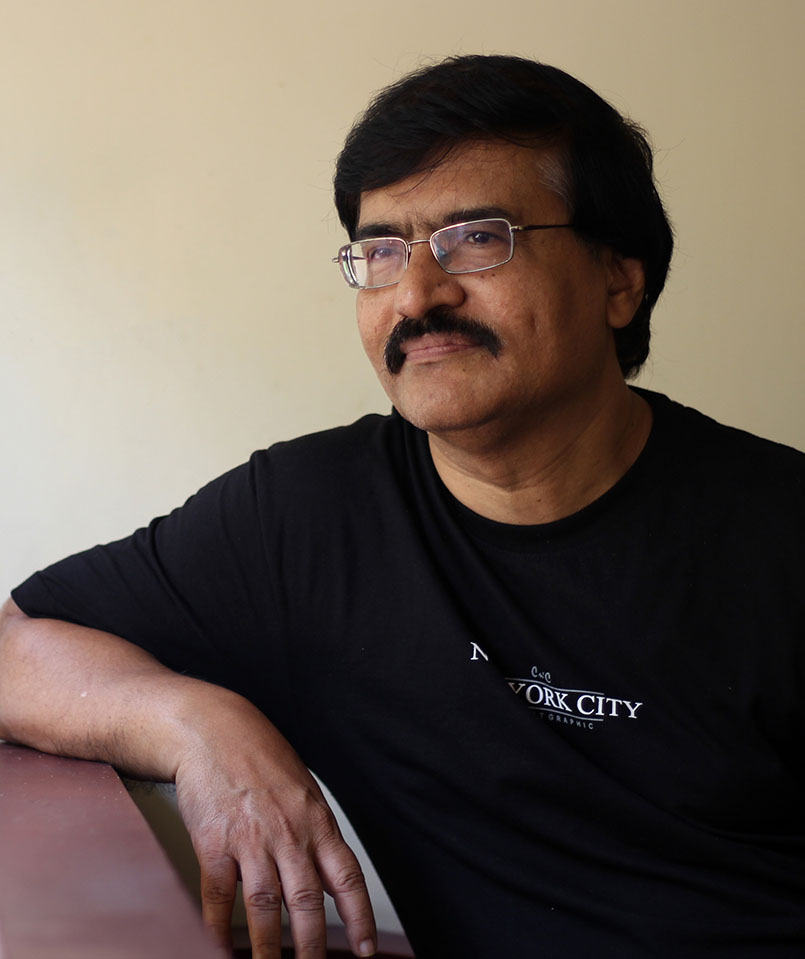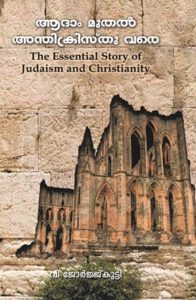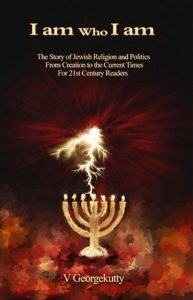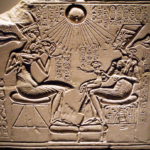“Most humans, in varying degrees, are already dead. In one way or another, they have lost their dreams, their ambitions, their desire for a better life. They have surrendered their fight for self-esteem and they have compromised their great potential… Yet they need not remain in that state…They can each perform the greatest miracle in the world. They can each come back from the dead…”
― Og Mandino (The Greatest Miracle in World)
The Patidar (Patel) community of Gujarat is presently on the warpath demanding reservation for the community in higher education and government jobs by granting it the status of Other Backward Community (OBC). The Patidars are considered a politically and economically powerful community in Gujarat. The present Chief Minister Ms Anandiben Patel herself belongs to the community. So is the state BJP chief. Nearly forty state legislatures and half a dozen members of Parliament come from the community. The community is also considered economically well off. Although primarily a farming community, the Patels have a significant presence in trade and business in sectors such as dairy farming, textiles, real estate and diamonds. They also own a good number of educational institutions in the private sector in Gujarat. Patels also run most of the motels in the US.
It surprised many that the Patidars suddenly rose in unison seeking a piece of the quota pie. May be the inspiration came from similar demands made by influential groups like the Gujjars of Rajasthan, the Jats of Haryana and the Marathas of Maharashtra. But the abruptness with which the quota stir of the Patidars erupted and the speed with which it transformed into a gargantuan movement seem to have caught everyone by surprise.
Before July this year, hardly anyone had heard the name Hardik Patel, the twenty two year old commerce graduate now leading the Patidar agitation. But two months down the line, he has emerged as the poster boy of the Patdar quota stir. A few months back, he launched a group called Patidar Anamat Andolan Samiti (PAAS) to spearhead the quota campaign. The agitation that started in July this year did not attract massive crowds or serious media attention. The authorities mostly chose to consider the reservation demand and the related agitations as a passing affair. Besides, the leader of the movement happened to be a young and inexperienced nonentity. None thought it necessary to lose sleep over the agitation. Besides, the BJP governments both in the State and in the Centre came to power with the solid support of the community. So, few had expected the community to rise in a serious revolt against governments that it had helped establish.
The PAAS organized its first rally on 6 July 2015 at Mehsana. An estimated 25,000 people participated in the rally. Hardly anyone considered it as anything remotely ominous. But, as it turned out, the Mehsana rally was a mere curtain raiser. More rallies followed. The number of participants in the Patidar shows of strength kept growing exponentially. On 17 Aug 2015, the agitators swooped down on Surat, the second biggest city of Gujarat and the diamond capital of the nation. The diamond and textile markets ground to a halt. So were most educational institutions in the city. Estimates on the attendance at the Surat rally vary from one lakh to half a million.
The success of the Surat rally was a shot in the arm for Hardik Patel and his quota movement. The stir swiftly shifted gear. Hardik Patel announced a Maha Kranti rally at Ahmedabad on 25 Aug 2015. The organizers declared that the rally would be attended by no less than two million people. None believed that such a fledgling movement and its novice leader had the potential to assemble such a massive crowd. The general thinking was that even established political parties with massive organizational machinery would not be able to get more than a couple of lakh people together in rallies to be addressed by their iconic national leaders. So the claims of the organizers were mostly dismissed as the usual grandstanding by rally organizers. But the crowds that converged at Ahmedabad on the day of the rally astonished all and sent shivers down the spine of the authorities.
On 25 August 2015, massive waves of people from across Gujarat descended on the State capital and proceeded to the GMDC grounds – the venue of the rally. The ground soon filled spilling people on to the streets of Ahmedabad. It was virtually a simmering sea of humanity. The whole city was choking with people and bursting at its seams. The organizers claimed that more than two million people attended the rally. Conservative estimates suggested a crowd of some half a million people. The rally was certainly a grand show of the might of the Patidars. What surprised observers and analysts was that all those hordes and hordes of people had converged at Ahmedabad heeding to the call issued by Hardik Patel – a youngster who could hardly claim of any personal charm or extraordinary skills of oratory.
A procession was taken out as part of the Ahmedabad rally to present a memorandum to the District Collector. Hardik Patel wanted the Chief Minister of Gujarat to come personally to receive their memorandum. The CM refused. Hardik Patel declared that he would go on a hunger strike at the rally venue. Police arrested him for overstay on the ground. It was a grave miscalculation on the part of the Police. The crowds simply went berserk. All hell broke loose on the streets of Ahmedabad. Clashes broke out not only between the agitators and Police but also between the agitators and those opposing the quota demand of the Patidars. Police used brute force to disperse off violent mobs. Altogether, some ten people lost their lives in the madness of that day.
Hundreds of vehicles were torched and properties worth millions were destroyed. The agitators were not alone in indulging in violence. The next day, videos and CCTV footage surfaced showing masked police in uniform and in civilian clothes, breaking into residential premises smashing vehicles and destroying property. Army and paramilitary were called in to control the situation. Curfew was imposed in some part of Ahmedabad and in other cities like Surat, Rajkot and Mehsana. The Prime Minister personally went on the air seeking an end to the violence. It should be said to the credit of the Gujarat administration that after the initial shock and surprise, it pulled together swiftly to bring the situation quickly under control. Violence ended. However, the likelihood of the closure of the issue that had triggered it all is still not in sight.
The quota stir of the Patidars raises several questions. The most prominent one among them is why a community that is still considered highly industrious and affluent suddenly decided to come together in such a massive and emotional way to demand reservations. Hardik Patel says that his sister who had a high score was denied admission for higher education while someone who had half her score got admission through the quota system. He demands that his community too be made beneficiary of the caste based quota raj by granting it the status of OBC.
It is not easy to believe that Hardik Patel and his community do not realize that it is virtually impossible for the administration to give in to their demand for reservation. There is a ceiling of 50% on all the reservations. Adding more and more communities into the quota list while retaining the ceiling will have serious implications for those already enjoying the convenience of caste-based quotas. It would be a sure recipe for dangerous caste rivalries. This being the ground reality, what made the community erupt in a quota agitation in a way that has been stunningly sudden and staggeringly mammoth?
The estimates on the ratio of the Patel population in Gujarat appearing in the media range from 12 to 20 per cent. Whatever be the exact proportion of the Patidar population, one thing seems clear. The Patels have the strength sufficient to determine whether the ‘lotus would bloom or not’ in the next Gujarat elections. Hardik Patel has already declared that if the present BJP government fails to accept their demand for quota, BJP would not come to power in the next election.
So, on the surface of it, the Patidar agitation looks a grave challenge to the BJP. But, such a view might be too simplistic considering that the Patels have been steadfastly supporting BJP after it broke its relationship with the Congress party long ago. The rather amusing truth is that the community had dumped Congress on the issue of caste-based reservations granted to some other communities. Reports say that Hardik Patel comes from a family, which has been traditionally associated to right wing (Sangh Parivar) politics. Why would he suddenly decide to become an enemy of BJP? Why is he enjoying such overwhelming support from his community in this fight for quota? Analysts have suggested two rather opposing reasons for this intriguing phenomenon of the rage of the Patidars. Let us briefly discuss these.
One of the reasons suggested by analysts is the frustration of the Patidar community arising out of the apparent failure of the much-vaunted ‘Gujarat Model’ of development that has been more or less fully focused on the manufacturing sector during the last decade. The employment opportunities generated by this sector has been very limited and mostly confined to low-grade blue-collar jobs. We all know that cities like Bangalore, Hyderabad, Chennai, Gurgaon, Pune and even Thiruvananthapuram have been the employment destinations for a large number of educated youth of this country primarily because of the explosive growth of the services sectors like IT and IT Enabled Services (ITES). But we can find hardly any such service industries operating in Gujarat. The near absence of the services sector in Gujarat has been seriously limiting the job opportunities of the educated youth of the State.
A report in the media says, “In the last 10 years Gujarat Public Service Commission has recruited only twice while in the past it would carry out recruitment every year.” In November 2014, the state government admitted in the Assembly that 9.72 lakh, educated job seekers were registered at various employment exchanges from 2011 to 2014. Analysts say that Gujarat was witnessing a kind of growth that produced a few billionaires. The spreading tentacles of big corporates gradually squeezed out most small and medium traders and entrepreneurs. These ground realities have been highly agonizing for the middle class entrepreneur communities of Gujarat like the Patidar.
The problems besetting higher education sector of Gujarat adds to the frustrations of the middle class. The middle class, as elsewhere in the country, is fully conscious of the reality that the future of their children lies in higher education. This is particularly so in Gujarat where the job market remains stagnant. The middleclass rightly believes that with quality higher education, the young generation would be able to seek jobs elsewhere within or outside the country. But higher education has been another area that has been suffering under the Gujarat model of development.
Large-scale privatization of education is one of the policies closely associated with the Gujarat Model. The data obtaining from the Department of Education of the Government of Gujarat show that out of the 21 medical colleges set up in the state during the last fifteen years, only six were state-run and the remaining fifteen were self-financed. Out of the fourteen Dental colleges, only three were under the government and eleven in the private sector. The state had started 16 Engineering colleges during the period. But a staggering 102 Engineering colleges were established in the private sector. “In private colleges, on an average, the fees are ten times higher than government colleges”. Some of the participants in the 25th August Maha Kranti rally of the Patidars at Ahmedabad were heard telling the media that they had to sell off their lands to send their children abroad for higher education since they believe it a better option than enrolling them in self-financing institutions where quality is poor and fees are sky high.
It is not that the Patel community is outside the lucrative business of the state’s private sector higher education. Many of the self-financing educational institutions levying exorbitant fees are owned by prominent Patels. For instance, Ganpat University in Mehsana district is owned former BJP Minister Anil Patel and his family. Other examples include Nirma University in Ahmedabad, DD Desai University at Nadiad, Charusat University in Anand and Navarachan University in Vadodara. Reports say that at least two dozen BJP leaders of Gujarat belonging to the Patel community including sitting MLAs and MPs are directly associated with the private educational institutions operating in the state. No wonder the anger of the Patidar agitators was also directed against politicians of their own community. The offices of several prominent Patel politicians were attacked and vandalized in the violence that played out in the aftermath of the Ahmedabad rally.
So, can we therefore conclude that the Patidar stir for quota is against BJP and the model of development pursued by the Gujarat government during the last decade or so? Perhaps, such an inference would be too simplistic. If we pay close attention to the way Hardik Patel has articulated the quota demand of his community, we would find that OBC status is just one part of the demand. It is difficult to believe that Hardik Patel and the community he represents are so puerile in their thinking to believe that the Gujarat government would accept their demand for OBC status. That is why there is a second part to the demand. It says that if Patidars are not granted quota under the OBC category, then the government should scrap all caste-based reservations. Analysts believe that this second part is extremely significant.
Hardik Patel makes no efforts to conceal his ideological leanings. Bal Thackarey and Bhagat Singh are his heroes. VHP leader Pravin Togadia is his inspiration. It has been reported in the media that Hardik’s father is a member of the BJP. It is an open secret that the right-wing ideology is against caste-based reservations. But as a political party, BJP cannot ignore the reality that it would be political hara-kiri for the party to make any direct attempt to meddle with the current caste-based quota system. However the party and the ‘Parivar’ can always make use of an ‘adjustment agitation’ to bring the seeming injustice in the caste-based quota regime to the fore to trigger an active debate for a review of it. So the critical question is, ‘eh quota ka peechey kya hai?’ Is it part of a hidden right-wing agenda to upset the applecart of caste-based quotas? Perhaps, we have to wait for a while before the pieces fall in to place.
Finally, is the caste-based quota system unjust and unfair? Perhaps, the answer is both ‘yes’ and ‘no’. We should remember that the system of caste-based reservations is not an innovation of independent India. Discriminative patronages in many forms were introduced into India by our colonial masters. They opted for it more out of the need to ‘divide and rule’ India rather than out of any genuine compassion for the socially and economically backward sections of the Indian society suffering from the evil effects of casteism. Even after we achieved independence and became a constitutional democracy practising secularism, some kind of protective discrimination was considered necessary to uplift the long oppressed sections of the society. The leaders of independent India had rightly believed that it was too much to expect the people who had remained forsaken outside the mainstream society to become fit overnight to compete with their socially more advantaged rivals. However, the Constitution that came into force effective from 26 Jan 1950 had not created a direct provision for reservations in government jobs. In the case of State of Madras Vs. Smt. Champakam Dorairanjan AIR 1951 SC 226, the Hon. Supreme Court of India pronounced that caste based reservations violated Article 15(1) of the Constitution. The first amendment to the constitution was made to introduce Art. 15 (4) to nullify the consequences of the judgement. Thus, caste-based quota system made constitutionally valid in spite of the guarantee it provided for equality to all Indians irrespective caste, creed, language, faith etc.
In spite of the introduction of quotas, the ratio of the so-called lower caste people remained woefully small in positions of power and influence. Also, the discrimination against them continued in hideous ways within the society even after India’s independence. So caste based quota system continued. Gradually more and more classes and communities started demanding quotas. Politicians found the instrument of quotas a powerful tool to create and sustain vote banks. So, governments and political parties started a competitive campaign to bring more and more castes under the ambit of the quota raj. In 1979, the Mandal Commission was established to assess the situation of the socially and educationally backward citizens of India. The commission submitted a report in 1980 recommending increase in the reservation from 22% to 49.5%. In 1990, the recommendations of the Mandal commission were implemented in Government Jobs by the central government under Shri V P Singh. More and more castes continued to get added to the list of backward castes eligible for quota. Proposals were brought in to increase the quota even beyond the levels recommended by the Mandal Commission. Fortunately for the nation, the Hon Supreme Court of India put its foot down and prescribed a cap of 50% on total reservations.
None can deny the fact that caste based reservations benefited the socially oppressed classes of India. There has been substantial increase in the proportion of such people in positions of power. This include many ministers at the Union and State levels. Indian Parliament and State legislatures have substantial presence of the people from the so-called lower castes, thanks to reservations.
However, we cannot ignore the reality that there is an ugly underbelly to the whole system of caste-based quota system. For one thing, the bulk of the benefits under the quota regime are cornered by a minuscule population of the classes eligible for quota. Generations after generations, they continue to enjoy the fruits of quotas while a huge majority belonging to these communities continue to wallow in abject poverty doing the most menial jobs. It is sad that the quota system has been creating an elite minority within the classes concerned and that it is blocking a more even distribution of the benefits of the quota based system.
Another problem with the quota system is the sacrifice of merit on the altar of caste. In a discussion on NDTV 24×7 the other day, a former Director of IIT was heard saying that 50% of the seats in all the IITs and NITs are reserved under the caste-based quota. It is mandatory to fill those seats exclusively from the castes for which the seats are earmarked. The consequence is that candidate who had scored even zero marks in the entrance tests had to be given admissions. These students are unable to cope with the standards or the syllabi of such national level institutions. Most of the quota students fail in their first year examinations…
Let me make it clear that I am not against caste-based quotas. But I am uncomfortable that the children of a district collector, a Police Superintendent or an Income Tax Commissioner should continue to enjoy the enormous benefits under the caste based quota and incentive system while millions belonging to their own communities live a pathetic life. What kind of a social justice is it that one household has half a dozen doctors coming through the quota system while another belonging to the same class has been eking out a living doing manual scavenging for generations? Also, it saddens me to witness the sufferings of the people belonging to the so-called upper castes, some of whom are poorer than the poorest, who are being victimized for the real and imaginary atrocities their past generations had committed under a hierarchical social system of castes.
Let me now conclude. The current system of purely caste-based reservation has apparently failed in its objective of uplifting the majority belonging to backward communities. I believe that one of the reasons for the failure of the system is that the quota system seeks to apply ‘fertilizer at the level of the blossoms rather than at the base’. To some extent, it acts as incentive to mediocrity. Perhaps, a better approach would have been for the government to undertake a dedicated mission to provide quality school education from the primary level to the children belonging to ‘backward’ communities. These children must receive special care and extra time to enable them break out of the constraints of their social and financial circumstances. Government should also be liberal in supporting poor families sending their children to schools. But, such an approach would not have been seductive enough when it comes to the dangerous politics of ‘quota’. However, had this been the focus of the nation during the past seven decades, we would have groomed a generation of the socially disadvantaged communities brimming with confidence to face the challenges of a highly competitive world; we would not have seen the privileged few arrogating to themselves all the caste-based incentives. And we would not have been admitting candidates scoring zero marks into elite national level institutions or into critical government positions…













Sir,
Your observations in the last but one para is true. I also believe that the whole episode is for the second reason only.
Thanks for your comment
Correction first, the present PM is not a beneficiary of reservation/quota as he is an OBC and not a reserved category politician. There is no OBC quota in politics.Secondly there is also no Quota system in Higher judiciary, so no question of a CJ coming out of quota raj.
Yes, it is true that quota was a neccesity at on time and in one period and its inclusion in Constitution was manifested in the noble ideas of our forefathers in bringing an equal and equitable society and the same can be Traced back to the Poona Pact between Gandhiji and Dr. Ambedkar. However , the problem as you rightly pointed out is in implementaion as who have benefitted are now a class among the 'classes' themselves and they are very much prone to practicing social untouchability towards their lesser priviledged brethren.
Hardik Patel is more of a puppet created to engage the Government on more than one fronts and write its epitaph much before its death.
Nicely written , nevertheless and undoubtedly timely published. kind regards.
Thanks for your valuable observations. It was not my intention to cite the cases of the PM and CJ as examples of how reservations put people in esteemed positions. I had only sought to highlight the reality that independent India had opportunities available even to the historically oppressed classes to rise to the top. I believe that the CJ might have been a beneficiary of the reservation system to some level although it did not directly apply in his elevation to the post of CJ. In any case I have since edited the post to avoid possible misunderstandings. I am grateful to you for pointing it out.
Regards,
VGkutty